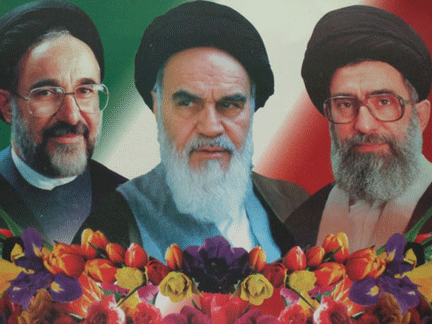
How Far Will Iran’s Rulers Go to Consolidate Their Power?
Akbar Ganji, Foreign Affairs, June 24
AKBAR GANJI is an Iranian journalist and dissident who was imprisoned in Tehran from 2000 to 2006 and whose writings are currently banned in Iran.
Iran is a paradoxical nation. On the one hand, its political structure is a fundamentalist sultanism run by Supreme Leader Ali Khamenei and personified at least in the eyes of the outside world, by President Mahmoud Ahmadinejad. On the other hand, Iran is farther along the path to democracy than most countries in the Middle East. It has a sophisticated political culture: its intellectuals, women, and young people are highly literate, cosmopolitan, and committed to the ideals of democracy, human rights, and nonviolent social transformation. The majority of Iran’s population stands against the country’s fundamentalist regime.
As I explained in my essay [1] “The Latter-Day Sultan” (November/December 2008), oppression has been the Iranian regime’s principal means of sustaining sultanism. The aftermath of the recent presidential election clearly demonstrates this point. The preponderant majority of Iranians voted against Khamenei by voting against Ahmadinejad, Khamenei’s factotum and mouthpiece. (See the preliminary analysis of the election published by Chatham House on June 21, 2009, here [2].) But Khamenei has refused to abide by their choice. In a colossal fraud, his loyalists have counted the people’s vote in favor of Ahmadinejad and then dubbed his victory a “divine miracle.”
Rejecting the lies and the chicanery, hundreds of thousands of Iranians have turned to the streets in search of justice. Khamenei has responded with repression. His henchmen have stormed universities, attacking students and destroying public property. They have opened fire on innocent protesters and imprisoned reformists they suspect of having roused the people into action. Last Friday, Khamenei delivered a much-anticipated sermon in Tehran. Acknowledging “differences of opinion” among the presidential candidates, he said that “when it comes to serving the nation . . . the viewpoints of the president [Ahmadinejad] are closer to mine.” He said allegations that the election had been rigged in Ahmadinejad’s favor — with 11 million votes artificially created — were lies manufactured by Iran’s enemies, the United States and Israel. Khamenei threatened his critics, claimed he was ready for martyrdom, and called on protesters to clear the streets, warning that if they did not, they would “be responsible for any violence that [might] ensue.”
This is nothing less than an electoral coup, and its aim goes far beyond bringing victory to Ahmadinejad; it is a full-fledged takeover of the state. Indeed, one of Khamenei’s main objectives is to monopolize power in the executive branch and his own office. In order to establish a totalitarian bureaucracy, he has been maneuvering to shut down the interagency councils that adjudicate conflicts between state institutions and the Planning and Budget Organization, which prepares the government’s annual budget and sets its short- and long-term development goals. He has increased the influence of the minister of justice, largely an instrument of his office, in the cabinet and over other state institutions.
Another one of Khamenei’s central goals is to create a new unified ruling elite with vast political and economic power. Khamenei and his supporters have been snuffing out dissent among intellectuals, political parties, labor unions, clerical seminaries, and civil society groups. They have been enhancing ideological uniformity at the senior level of government by defaming previously high-ranking officials, such as former President Ali Akbar Hashemi Rafsanjani. They have also been extending their control over state corporations, large industries, and banks in a bid to create a state-run form of capitalism that would benefit them.
Khamenei and Ahmadinejad’s plan has already received a warm welcome from Iranian arch-conservatives, some Islamic fundamentalist groups in the Middle East, and members of Israel’s political right who oppose peace in the region. Should it materialize, the resulting state would resemble the totalitarian militaristic bureaucracies of Latin America in the 1980s and of certain countries in the former Soviet bloc. Like those states, the new Iranian regime would be hell-bent on restructuring the ruling class, eliminating influential opponents, and accumulating capital. Khamenei and Ahmadinejad may speak in the name of the people and the nation, but they have methodically resisted the demands of any professional group and have defied the formation of trade unions, syndicates, and political parties. They are fundamentally against democracy, including even those semi-democratic institutions that currently exist in Iran, such as elections and the parliament. Their ideal regime would create a state-run capitalist class eager to profit in international markets to the detriment of blue-collar workers in Iran and any independent private sector. It would be a rentier state based on political allegiances, brimming with discrimination and corruption and maintained by the machineries of oppression. If left unchecked, Khamenei’s efforts would further consolidate power in the hands of a select few — all but guaranteeing the ultimate triumph of sultanism in Iran.